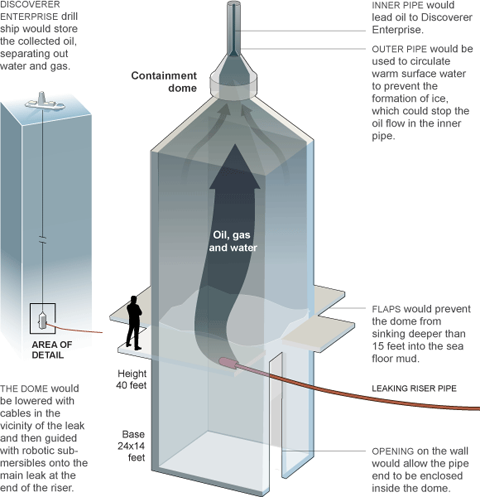Containment Dome

Within days of discovering the leaks from the broken riser on the sea floor, BP began to consider use of a large containment dome. The idea was to place the dome, also known as a cofferdam, over the larger of the two leaks, with a pipe at the top channeling oil and gas to the Discoverer Enterprise, a ship on the surface. Following an MMS inspection of the Discoverer Enterprise, BP began to lower the 98-ton dome to the sea floor late in the evening of May 6.
MAY 7 | Lowering a Containment Dome

The likelihood of collecting oil with the cofferdam was uncertain, chief among potential problems was the risk that methane gas escaping from the well would come into contact with cold sea water and form slushy hydrates, essentially clogging the cofferdam with hydrocarbon ice.
The effort did fail, for that reason. Because hydrocarbons are lighter than water, the containment dome became buoyant as it filled with oil and gas while BP tried to lower it. BP engineers told Lynch that they had "lost the cofferdam" as the dome, full of flammable material, floated up toward the ships on the ocean surface. Averting a potential disaster, the engineers were able to regain control of the dome and move it to safety on the sea floor. In the wake of the cofferdam's failure, one high-level government official recalled Andy Inglis, BP's Chief Executive of Exploration and Production, saying with disgust, "If we had tried to make a hydrate collection contraption, we couldn't have done a better job."
